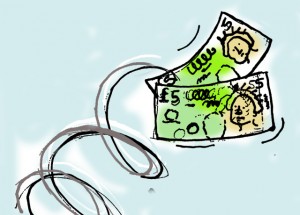Wherever we go, we will always find a same price for the given commodity. In order to ensure that the identical products and services in the two different countries cost same, Purchasing Power Parity (PPP) Theory is brought into use worldwide to compare the income level of the countries. PPP theory makes use of the law of one price which states that the purchasing power of the two different currencies must remain at parity i.e, a given commodity must have the same price in the different countries.
The Absolute Purchasing Power Parity Theory ensures that the equilibrium exchange rate between the two currencies is equivalent to the ratio of the price levels in the two nations i.e, if the identical goods of two countries are measured in the same currency, they must cost same to each and every individual.
The relative PPP theory states that a change in the exchange rate of the different countries over a period of time must be accompanied by a proportional and relative change in the price level of the same countries over the same period of time so that the prices of commodities remain same irrespective of the place.
Click here for government certification in Accounting, Banking & Finance





5 Comments. Leave new
The PPP Theory has a lot of application in economics and helps in each and every area where finance is concerned now a days. Good job !
Good one
splendid work.
Very well codified article.. I find it amazing..
well done